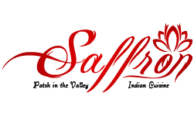Content
Any insights should be shared in a public forum so everyone in the company can learn. Members may feel a sense of accomplishment, sadness, or insecurity about what is to come. This requires leaders and other group members to be sensitive, respectful, and compassionate. The storming phase begins after groups establish to feel a sense of comfort and inclusion. A kanban board gives you a visual overview of all of the tasks for your project, so you can keep an eye on any bottlenecks or areas of pressure.
- Other times a team never leaves this stage and becomes stuck and unable to do its work.
- Storming is the stage where everyone starts to find their voice.
- This activity was probably not too difficult if the group or team you chose was, for example, a work-based project team.
- In the adjourning stage, your team wraps things up, disbands, and the individual members will transition to their next big adventure.
- Members may express concerns about being unable to meet the team’s goals.
- If you’re not careful, storming could lead to arguments, power struggles, gossip and even sabotage.
Instead, they adopt an open exchange of ideas and opinions and learn about what it’s really like to work together. This can lead to conflict, disputes, and competition, depending on how their expectations, workflows, ideas, and opinions differ. When groups or teams comprise people from just one culture, there are often agreed but unspoken social, organisational and national ways of behaving that do four stages of team development not need to be explained. It can usually be assumed that everyone has a common understanding of what a group is, how it will work, and how leaders and followers will behave. But such assumptions do not hold true when people are from different cultures. You will need to read this section if the group or team you want to focus on in the final activity is a virtual or multicultural group or team.
Stage 3: The Norming Stage
Differences in terms of power, attitudes, values and social factors can all contribute to team conflicts. This final stage is also sometimes referred to as “mourning”. At the end of the project, the team will begin to wrap up their tasks and start to disband and move onto other projects. Although norming is a calm stage of team development, there are still things that you can and should do to help things run more smoothly. This stage can be difficult for some, but members are encouraged to take what they learn from each group they are part of to aid future groups in the progression towards the performing stage.
Some believe this cautious behavior prevents the group from getting any real work done. However, the focus for group members during the forming stage is to become familiar with each other and their purpose, not on work. During the performing stage of group development, also known as synergy, the performance of the group is at its peak. The performing phase is characterized by high productivity and happiness between group members brought on by the realized benefits of group work during the norming stage. Group members remain motivated, loyal, unified, and supportive of the group goals, which allows for decisions to be made more easily since everyone is in agreement.

Take the time to allow the team to normalize to get back to the performing stage. This is when the team is at optimal performance and is able to accomplish tasks quickly because members flow through the process. Performing is the stage when the team has come together as a group and is operating at a high level of efficiency and accomplishing the task it was charged with. For instance, a team leader may explain the duration of the project and the desired outcomes in this stage.
Team development stages
The fifth stage of group development, also known as the mourning stage, is the final stage a team will go through. After a project is over or if a team is disbanded, team members who worked together will go into a small mourning period. Group members may have a hard time working with other groups as they had strong group dynamics with their previous team. Here, the team members begin to work effectively as a unit.
A team leader may help team members understand the goal of the team as well as potential challenges. A team sponsor is a person who provides the team with the goal and the resources needed to accomplish that goal. Building strong teams is important because it fosters a healthy environment, where team members feel involved in how work gets done and valued as a member of the team.
What is the Norming Stage?
If you begin your project with a focus on people and the team, you will set yourself up for the best results. Reaching the performing stage is a major success and often precipitates some form of team learning. Team learning is a behavioral process of seeking, gathering, discussing, and implementing methods of team https://globalcloudteam.com/ success. Whether through training, group initiative, or innovative leadership, team learning is an action step that ensures healthy team development. The norming stage of team development is the calm after the storm. In this stage of team development, team members fall into a rhythm as a cohesive taskforce.
The team members are now competent, autonomous and able to handle the decision-making process without supervision. Dissent is expected and allowed as long as it is channelled through means acceptable to the team. Throughputs refer to the activities and tasks that help to transform inputs into outputs. They may have the greatest influence on effective team work as they include team processes such as developing and maintaining cohesiveness, and communication. They also involve task activities which get the work done and maintenance activities which support the development and smooth functioning of the team. A strong team leader is the backbone of every high-performing team.
The most important task of a leader at the forming stage is to make a team out of separate individuals, creating a sense of camaraderie. Not knowing each other, people tend to work alone, and that might put future teamwork at risk. This stage begins to occur as the process of organizing tasks and processes surface interpersonal conflicts. Leadership, power, and structural issues dominate this stage.
The Storming Stage
Engaging team development benefits the team in a number of ways. Individual members of a team learn more about their personal potential, duties, and work dynamically within the team. Conversely, team development acquaints each member with the talents and roles of other members.
The skills of each member are fully optimized, supervision is almost never needed, and members feel a strong sense of trust in one another. In the Performing stage of team development, members feel satisfaction in the team’s progress. They share insights into personal and group process and are aware of their own (and each other’s) strengths and weaknesses. Members feel attached to the team as something “greater than the sum of its parts” and feel satisfaction in the team’s effectiveness. Members feel confident in their individual abilities and those of their teammates. In 1965, American psychologist Bruce Wayne Tuckman created the Stages of Development model to describe the process of group development.
Once a group receives the clarity that it so desperately needs, it can move on to the third stage of group development, known as the norming stage. The norming stage is the time where the group becomes a cohesive unit. Morale is high as group members actively acknowledge the talents, skills and experience that each member brings to the group. A sense of community is established and the group remains focused on the group’s purpose and goal.
Help your team reach their goals with strong leadership
Because a work team is a common arrangement within today’s business organizations, managers need to understand group behavior and team concepts. Managers must also decide on team size and member roles to gain the maximum contribution from all members. Generally, when organizations form teams, these organizations have specific projects or goals in mind.
Appropriate Leadership Styles During Five Stages of Team Development
You must be proactive and establish your team framework early in the process. A good team requires smart leadership and team building exercises to succeed. During these moments, team members discover their differences in work styles, experience, and talents. But, the storming stage is the trial that lets team members express their individualities and to see the need for group cohesion. Norming – is when close relationships develop and the group demonstrates cohesiveness.
Employee Incentive Ideas
The norming stage is a time where group members become a cohesive unit. A sense of community is established, and the group remains focused on the group’s purpose and goal. Team training and development are key to strengthening teams so they are equiped to accomplish organizational goals.
Collaborative On-Line Research and Learning
Charles is frightened in a dark alley because he remembers stories of others being attacked in dark alleys. Sherika labels the arousal she is feeling as attraction because she is in the presence of a good-looking man. d. Dora is angry because she cannot figure out how to convince her husband to take her to Hawaii. Ann is frustrated because traffic has made her late for an important meeting.
Listening is the most helpful action team members and the team leader can take to resolve these issues. Teams should be able to work together without constant conflict and disagreement. Members of the team start to see each other more frequently and begin to develop a closer relationship. They learn to trust one another and become comfortable around one another. These stages are used to describe how teams develop and perform. This is particularly useful for sports teams and applies to other groups such as businesses, families and even friendships.
